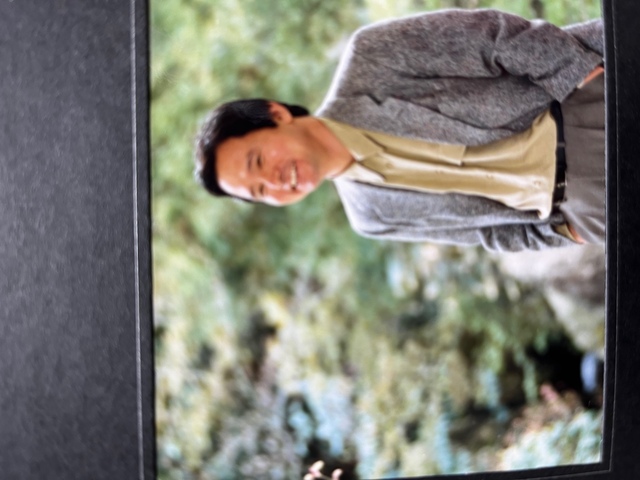The following is from Masayuki Takayama's serialized column that marks the end of Weekly Shincho, which was released today.
This article also proves that he is the one and only journalist in the postwar world.
It is a must-read not only for the Japanese people but also for people worldwide.
An Inconvenient Newspaper
The Asahi Shimbun loves China, Korea, and LGBT and hates nuclear power plants, the Self-Defense Forces, and Sugita Mio.
So it gets along well with the Japanese Communist Party (JCP), but only because it opposes the death penalty.
Like Lenin, the JCP looks forward to hanging anyone and everyone who comes to power, and many have joined the party for that reason.
Abolishing the death penalty is outrageous.
Asahi is different.
In the past, the Asahi teamed up with Kim Il Sung to launch the "North Korea is a paradise on earth" campaign and sent 90,000 Koreans in Japan to hell.
Hiroshi Iwadate, who wrote a series of lies, is a co-conspirator who "tricked people into death" and could be executed.
When the Self-Defense Forces left for Samawah, Iraq, Yasunori Kawakami included detailed maps of the garrison and Japanese escape routes in his paper.
As a result, multiple rockets were fired.
Naturally, it established the crime of inviting foreign aggression.
The only statutory penalty is the death penalty.
In the case of the Senkakus, Asahi has consistently supported China's claim and made it a territorial issue.
In return, a Chinese government agency has rehired Asahi's Beijing bureau chief.
It, too, could be charged with aiding and abetting a foreign invasion.
Therefore, Asahi is not a stranger to the death penalty.
Keiko Chiba, a member of the Democratic Party of Japan, attacked a riot policeman with Molotov cocktails during the Narita struggle, and the riot policeman was burned to death.
If causation is proven, it will impose the death penalty.
So she has been at the forefront of abolishing the death penalty.
Asahi must feel similarly.
The issue that Asahi is now raising is the timing of the executions.
The execution remains a secret even after the Justice Minister has given his seal of approval and the warden has been informed of the execution.
The execution takes place on the morning of the day of the performance.
The execution will only occur once several officers are summoned to the warden's office and ordered to "prepare for the implementation.
It would have been better to inform the warden in advance, but he is human.
It is hard to get off the floor of a death row inmate.
If it told them in advance, they might call in sick on the day of the execution.
So everything starts on the morning of the day.
When everything is ready, they go to pick up the condemned man.
A vital staff member accompanies them in case of resistance.
Heavy footsteps echo through the cells, and then they stop in front of someone's cell.
Japan has always had this same-day system.
Hotsumi Ozaki, an Asahi reporter who sold out his country to the Soviet Union, was notified after breakfast and executed before 9:00 am.
After the war, GHQ had the system changed to the U.S. style, and there was a period when "It gave notice before the previous day," but now it is back to the prewar practice of giving notice on the day of execution.
Two death row inmates are currently suing over this issue, claiming that "the day of execution is too inhumane.
The Asahi Shimbun newspaper reported on the "humane end" of a death-row inmate who was notified before the execution date.
Of course, while appealing for the abolition of the death penalty.
There are five cases for which records remain.
The oldest was in 1955 when he was notified two days before the execution and had time to call his sister to meet with her.
The case in 1971 was announced the day before.
It is recorded that he called his wife and relatives by telegram and "comforted" her in tears.
In 1973, a case at the Fukuoka Detention Center was also announced the day before, and Sakae Menda, who had been falsely convicted and was on death row, was told by the person in the cell next to her, "Thank you for a long time. According to his "Notes from Prison," Sakae Menda, who had been falsely convicted and sentenced to death, was told by the person in the cell next to his that he had just received notification of his call.
In the 1975 case, the notification was given the day before, and at the request of the condemned prisoner, the prosecutor in charge of the case was notified. The prosecutor brought nigiri sushi, a favorite of the condemned prisoner, to share with him.
In these four cases, the Asahi editorial complains about the "inhumanity of the same-day notice," but what about the fifth case?
The Asahi does not mention it, but it also occurred in the same year as the fourth case at the Fukuoka Detention Center.
A death-row inmate was told he would be executed the next day, went into a frenzy, trembled with fear, and committed suicide at dawn by slitting his wrists with a razor.
One out of five cases is a 20% chance that a prisoner on death row will go mad.
A number that cannot be ignored.
So the Justice Ministry reverted to the prewar method.
The Asahi covered it up.
If they wrote about it, their argument would collapse.
They do not write about inconvenient facts.
And they even wrote an editorial on the remaining four cases alone.
Asahi did not print the testimony of former Ehime Governor Kato on the Kake issue.
That was also because it was inconvenient for Asahi.
It would be more strange if there were inconveniences in reporting the news.






















